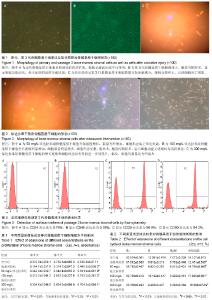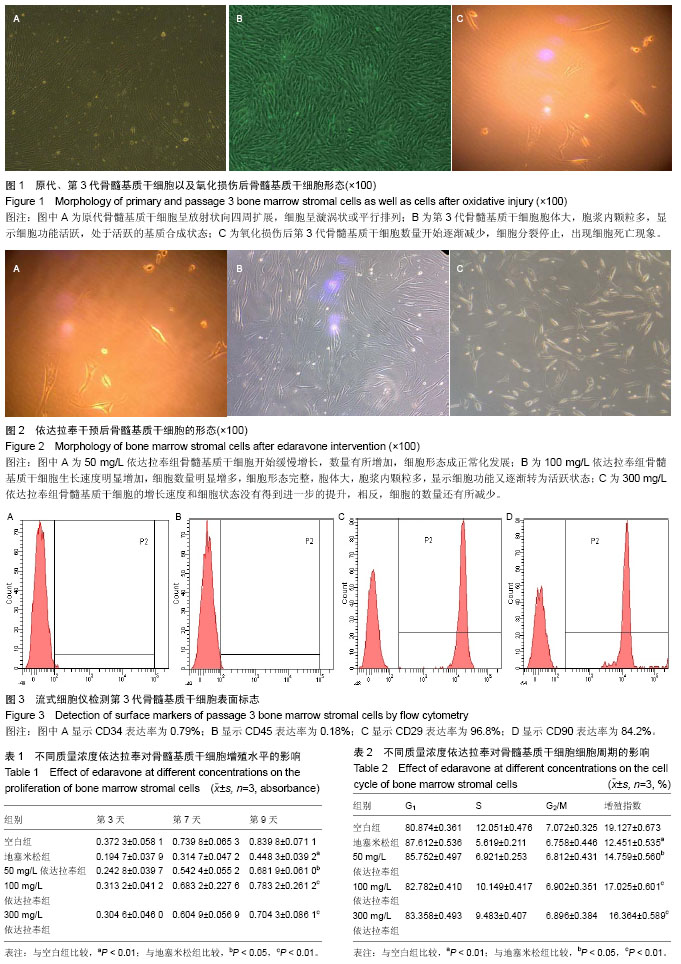| [1] Friedenstein AJ, Petrakova KV, Kurolesova AI,et al. Heterotopic of bone marrow. Analysis of precursor cells for osteogenic and hematopoietic tissues.Transplantation. 1968; 6(2):230-247.
[2] Owen M. Marrow stromal stem cells.J Cell Sci Suppl. 1988;10: 63-76.
[3] Redzi? A1, Smajilagi? A, Aljicevi? M,et al. In vivo osteoinductive effect and in vitro isolation and cultivation bone marrow mesenchymal stem cells.Coll Antropol. 2010;34(4): 1405-1409.
[4] Hilfiker A, Kasper C, Hass R,et al. Mesenchymal stem cells and progenitor cells in connective tissue engineering and regenerative medicine: is there a future for transplantation. Langenbecks Arch Surg. 2011;396(4):489-497.
[5] Lim PK, Bliss SA, Patel SA,et al. Gap junction-mediated import of microRNA from bone marrow stromal cells can elicit cell cycle quiescence in breast cancer cells.Cancer Res. 2011; 71(5):1550-1560.
[6] Tran E, Chinnasamy D, Yu Z,et al. Immune targeting of fibroblast activation protein triggers recognition of multipotent bone marrow stromal cells and cachexia.J Exp Med. 2013; 210(6):1125-1135.
[7] Lee WS, Suzuki Y, Graves SS, et al. Canine bone marrow-derived mesenchymal stromal cells suppress alloreactive lymphocyte proliferation in vitro but fail to enhance engraftment in canine bone marrow transplantation. Biol Blood Marrow Transplant. 2011;17(4):465-475.
[8] Kim K1, Dean D, Wallace J,et al.The influence of stereolithographic scaffold architecture and composition on osteogenic signal expression with rat bone marrow stromal cells.Biomaterials. 2011;32(15):3750-3763.
[9] Hernigou P, Beaujean F, Lambotte JC. Decrease in the mesenchymal stem-cell pool in the proximal femur in corticosteroid-induced osteonecrosis.J Bone Joint Surg Br. 1999;81(2):349-355.
[10] Otsuru S, Hofmann TJ, Olson TS,et al. Improved isolation and expansion of bone marrow mesenchymal stromal cells using a novel marrow filter device.Cytotherapy. 2013;15(2): 146-153.
[11] Pierini M, Dozza B, Lucarelli E, et al. Efficient isolation and enrichment of mesenchymal stem cells from bone marrow. Cytotherapy. 2012;14(6):686-693.
[12] Polisetti N, Chaitanya VG, Babu PP,et al. Isolation, characterization and differentiation potential of rat bone marrow stromal cells. Neurol India. 2010;58(2):201-208.
[13] Tocci A, Forte L.Mesenchymal stem cell: use and perspectives. Hematol J. 2003;4(2):92-96.
[14] Castillo AB, Jacobs CR. Mesenchymal stem cell mechanobiology.Curr Osteoporos Rep. 2010;8(2):98-104.
[15] Jones EA, English A, Kinsey SE,et al. Optimization of a flow cytometry-based protocol for detection and phenotypic characterization of multipotent mesenchymal stromal cells from human bone marrow.Cytometry B Clin Cytom. 2006; 70(6):391-399.
[16] McFarlin K, Gao X, Liu YB, et al. Bone marrow-derived mesenchymal stromal cells accelerate wound healing in the rat.Wound Repair Regen. 2006;14(4):471-478.
[17] 蒋文慧,马爱群,董安平,等.骨髓间质干细胞的分离培养与鉴定[J].西安交通大学学报:医学版,2005,26(3):224-227.
[18] 马力,刘大军,李德天,等.不同分离方法及培养条件对兔骨髓间充质干细胞生长增殖及生物学特性的影响[J].中国组织工程研究与临床康复,2008,12(38):7401-7406.
[19] 王超,徐蕴,宋文刚,等.大鼠骨髓间充质干细胞分离培养方法的建立及其表型分析 [J].细胞与分子免疫杂志,2007,23(5):466-468.
[20] Alm JJ, Heino TJ, Hentunen TA,et al. Transient 100 nM dexamethasone treatment reduces inter- and intraindividual variations in osteoblastic differentiation of bone marrow-derived human mesenchymal stem cells.Tissue Eng Part C Methods. 2012;18(9):658-666.
[21] Kuznetsov SA, Mankani MH, Robey PG. In vivo formation of bone and haematopoietic territories by transplanted human bone marrow stromal cells generated in medium with and without osteogenic supplements.J Tissue Eng Regen Med. 2013;7(3):226-235.
[22] 王栋梁,刘丹平,张正,等.地塞米松预培养兔BMSCs促进腺病毒介导BMP2转基因的高效表达[J].中华创伤杂志,2007,23(11): 878-880.
[23] Tan G, Kang PD, Pei FX.Glucocorticoids affect the metabolism of bone marrow stromal cells and lead to osteonecrosis of the femoral head: a review.Chin Med J (Engl). 2012;125(1):134-139.
[24] Wang XS, Zhuang QY, Weng XS,et al. Etiological and clinical analysis of osteonecrosis of the femoral head in Chinese patients.Chin Med J (Engl). 2013;126(2):290-295.
[25] 刘杰,孙正义,曹蕾.地塞米松对骨髓基质干细胞生物学特性的影响[J].中华骨科杂志,2003,23(11):691-693.
[26] Takahashi G, Sakurai M, Abe K,et al. MCI-186 prevents spinal cord damage and affects enzyme levels of nitric oxide synthase and Cu/Zn superoxide dismutase after transient ischemia in rabbits.J Thorac Cardiovasc Surg. 2003;126(5):1461-1466.
[27] Kikuta M, Shiba T, Yoneyama M, et al. In vivo and in vitro treatment with edaravone promotes proliferation of neural progenitor cells generated following neuronal loss in the mouse dentate gyrus.J Pharmacol Sci. 2013;121(1):74-83.
[28] 韩秋,沈丽华,张翠,等.依达拉奉对脑缺血大鼠内源性神经干细胞的影响[J].中国组织工程研究与临床康复,2011,15(32): 5962- 5966.
[29] Nakase T, Yoshioka S, Suzuki A. Free radical scavenger, edaravone, reduces the lesion size of lacunar infarction in human brain ischemic stroke. BMC Neurol. 2011;11:39.
[30] Shen YE, Wang Y, Yu GC, et al. Effects of edaravone on amyloid-β precursor protein processing in SY5Y-APP695 cells.Neurotox Res. 2013;24(2):139-147.
[31] 冯兴军,尚爱加,周定标.脑红蛋白脑保护作用的研究现状[J].国际神经病学神经外科学杂志,2008,35(2):178-181.
[32] Kimura K, Aoki J, Sakamoto Y,et al. Administration of edaravone, a free radical scavenger, during t-PA infusion can enhance early recanalization in acute stroke patients--a preliminary study.J Neurol Sci. 2012;313(1-2):132-136 |

